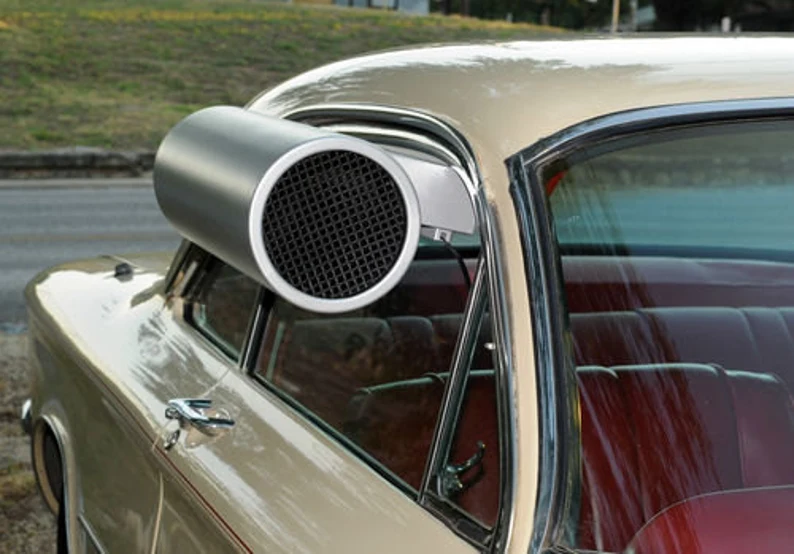Repair instructions
What Are Car Swamp Coolers?
Overview
Car swamp coolers, also known as evaporative coolers, offer an affordable and eco-friendly alternative to traditional vehicle air conditioning. These coolers lower the temperature inside your vehicle by evaporating water, which absorbs heat from the air. Although they provide a range of benefits, including environmental friendliness, budget savings, and improved air quality, swamp coolers also come with some notable drawbacks such as the need for frequent maintenance and subpar performance in humid climates.

1. How Do Car Swamp Coolers Work?
Car swamp coolers function by drawing in warm, dry air and passing it through a set of moisture-saturated cooling pads. These pads, typically made from corrugated cellulose, absorb water from a reservoir, and as the air passes through, the water evaporates. The evaporation process absorbs heat, lowering the temperature inside the cabin while adding moisture to the air. This creates a cooler, more comfortable environment inside the vehicle.
2. Swamp Cooler Advantages
Swamp coolers have several advantages that make them appealing, especially for those looking for an alternative to traditional air conditioning.
2.1. Better for the Environment
Swamp coolers use only water, air, and cooling pads to cool your vehicle’s interior, making them a more environmentally friendly option compared to air conditioners, which rely on refrigerants and chemicals that can harm the environment.
2.2. Budget-Friendly
Swamp coolers are significantly cheaper than air conditioning units, with prices ranging from $200 to $1,000, depending on the model. They are also energy-efficient, consuming far less electricity than an A/C system, which helps save on energy bills.
2.3. Cools the Cabin
Unlike basic fans, swamp coolers actively lower the temperature of the cabin. Depending on the system, they can reduce the temperature by 20° to 40°F, providing a noticeable improvement in comfort on warm days.
2.4. Easy to Install
Installing a swamp cooler is a relatively simple task, especially for someone with basic mechanical knowledge. While it’s recommended to seek professional help, most units can be installed without major modifications to the vehicle.
2.5. Energy-Efficient
One of the major advantages of swamp coolers is their energy efficiency. They use between 50% to 90% less energy than traditional A/C systems, making them a greener and more cost-effective choice.
2.6. Improved Air Quality
In addition to cooling, swamp coolers also improve airflow and air quality inside the cabin. The cooling pads act as natural filters, trapping dust and dirt while releasing clean, cool air into the vehicle.
3. Swamp Cooler Disadvantages
While swamp coolers have many benefits, they also come with some notable downsides that should be considered before installation.
3.1. Frequent Filter Changes
Swamp coolers require regular maintenance, including changing both the air and water filters. This helps prevent mold, mildew, and bacteria buildup, which can contaminate the air inside the vehicle. Filters should generally be replaced at least once a year.
3.2. Needs Replacement Parts
Like any mechanical system, swamp coolers have components that wear out over time. Cooling pads, water pumps, fans, and motors will all need to be replaced periodically. Depending on usage, these parts may need attention every few months or a few years.
3.3. Not as Cold as A/C
While swamp coolers do provide a cooling effect, they do not match the performance of modern air conditioning systems, especially in extreme heat. They’re a good option for moderate temperature control but won’t provide the same level of cold air as an A/C unit.
3.4. Not Suitable for Asthmatics
The increased humidity created by swamp coolers can be problematic for people with asthma or respiratory issues. High humidity levels may trigger asthma symptoms, and the growth of mold and bacteria in the cooler could further contaminate the air.
3.5. Performs Poorly in Humid Climates
Swamp coolers are less effective in humid environments. In areas with high humidity, the evaporation process becomes less efficient, reducing the cooler’s ability to lower the cabin temperature. Moreover, excess humidity can contribute to mold and mildew growth inside the unit.
3.6. Requires Water Supply
Swamp coolers need a constant supply of water to function, which means regular refills are necessary. Some units use a built-in tank, while others require an external water hose. In any case, keeping the cooler supplied with water is essential for it to work properly.
4. Where Are Swamp Coolers Installed in Cars?
Swamp coolers are typically mounted on the side windows of a vehicle, often on the passenger side. In some cases, they are installed at the rear, similar to the air conditioning systems found in older models like vintage Cadillacs. These coolers draw in fresh air from outside and push cool air into the cabin, making them a suitable option for vehicles without built-in A/C.
5. Maintaining Your Swamp Cooler
Proper maintenance is crucial to ensure the longevity and performance of your swamp cooler. Here are a few key tasks to keep in mind:
5.1. Drain the Sediment
Regularly draining your swamp cooler’s water tank will help prevent the buildup of sediment, minerals, and dirt, ensuring that the system works efficiently.
5.2. Clean or Replace Cooling Pads Regularly
Cooling pads should be cleaned at least once a year, and replaced every 2-3 years depending on wear and tear. Keeping the pads clean helps maintain optimal cooling performance.
5.3. Clean or Replace Filters
Just like cooling pads, the filters should be cleaned or replaced each time the cooling pads are maintained. This helps prevent contaminants from entering the cabin and ensures clean, cool air circulates inside the vehicle.
Car swamp coolers offer a cost-effective, eco-friendly alternative to traditional A/C systems, especially for those seeking lower energy consumption or who live in dry climates. However, they require regular maintenance and may not be suitable for everyone, particularly those with respiratory issues or those living in humid regions. By understanding the pros and cons and committing to proper upkeep, swamp coolers can be an effective and reliable cooling solution for your vehicle.
